Abstract
Dry matter accumulation, nitrate reductase activity of various organs, nitrate accumulation, nitrogen derived from nitrate, and nitrogen content were studied during 17 days of vegetative regrowth of harvested (detopped) alfalfa (Medicago sativa L.). Seedlings were grown in the glasshouse and treated with 0, 40, and 80 kilograms N per hectare applied as K15NO3 to determine whether reduced nitrogenase activity after shoot harvest limited vegetative regrowth. The role of nodules in reducing NO3− during this period of low nitrogenase activity was also investigated.
Applied nitrogen had no effect on shoot dry matter accumulation during the regrowth cycle. This observation suggests that reduced nitrogenase activity after shoot removal does not limit vegetative regrowth. Nitrate reductase activity was present in all tissues and ranked leaves > nodules > stems > roots. Root nitrate reductase did not respond to applied K15NO3, while leaf, stem, and nodule nitrate reductase increased significantly. Significant increases in total plant nitrate reductase activity were highly correlated with shoot regrowth. Nodules incorporated N from 15NO3−, and calculations showed that 1.5% of the total plant N formed during regrowth could have been derived through nodule nitrate reductase. Nitrate accumulated in tissues of all plants, including those grown in the absence of added K15NO3. Accumulation of NO3− in plant tissues ranked leaves > stems > roots. Analysis of the percentage of 15N showed that plants grown in either 40 or 80 kilograms N per hectare derived 65 to 75% of the N that accumulated during regrowth from NO3−. Approximately 23 milligrams of N · plant−1 accumulated during the regrowth period. Leaves accounted for 80% of this net increase, while stems accounted for 20%. There was no net change in root N.
These results indicate that, although alfalfa will efficiently utilize low levels of applied N in lieu of nitrogen fixation, N fertilization of seedling alfalfa after shoot removal will be of little value to increase yields. These data also indicate that nodules reduce NO3−, but their contribution to total plant N during regrowth is relatively small.
Full text
PDF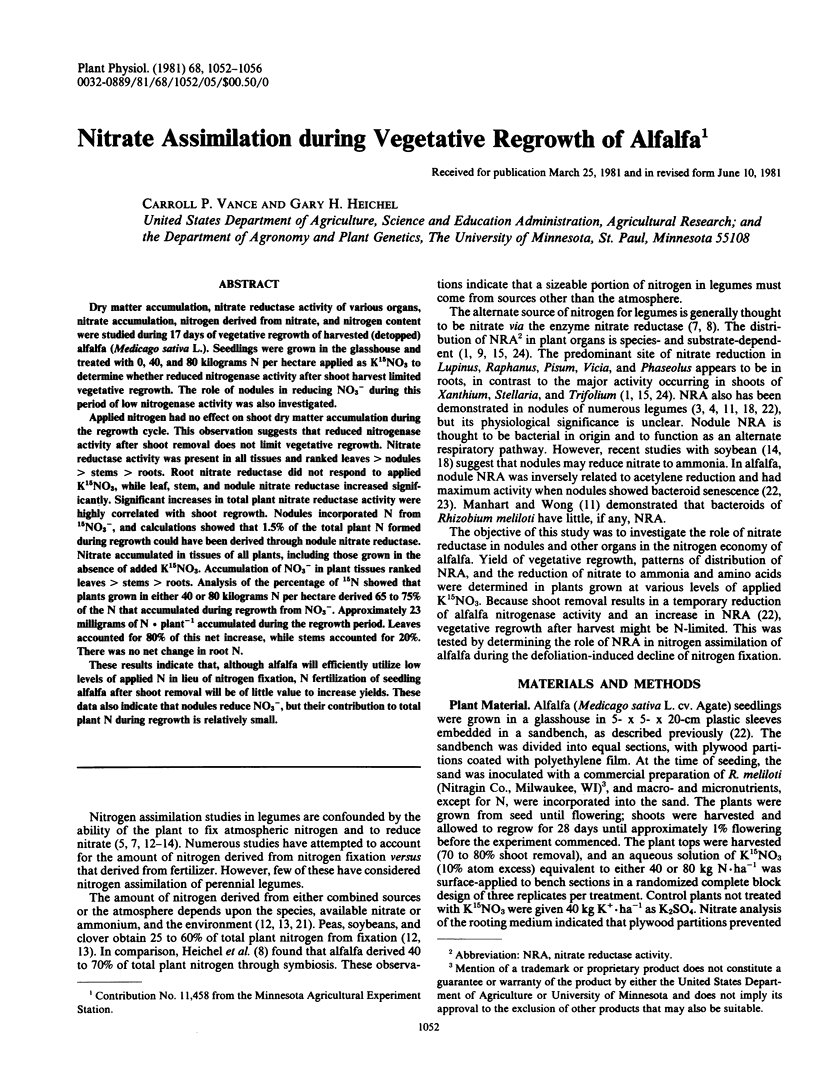
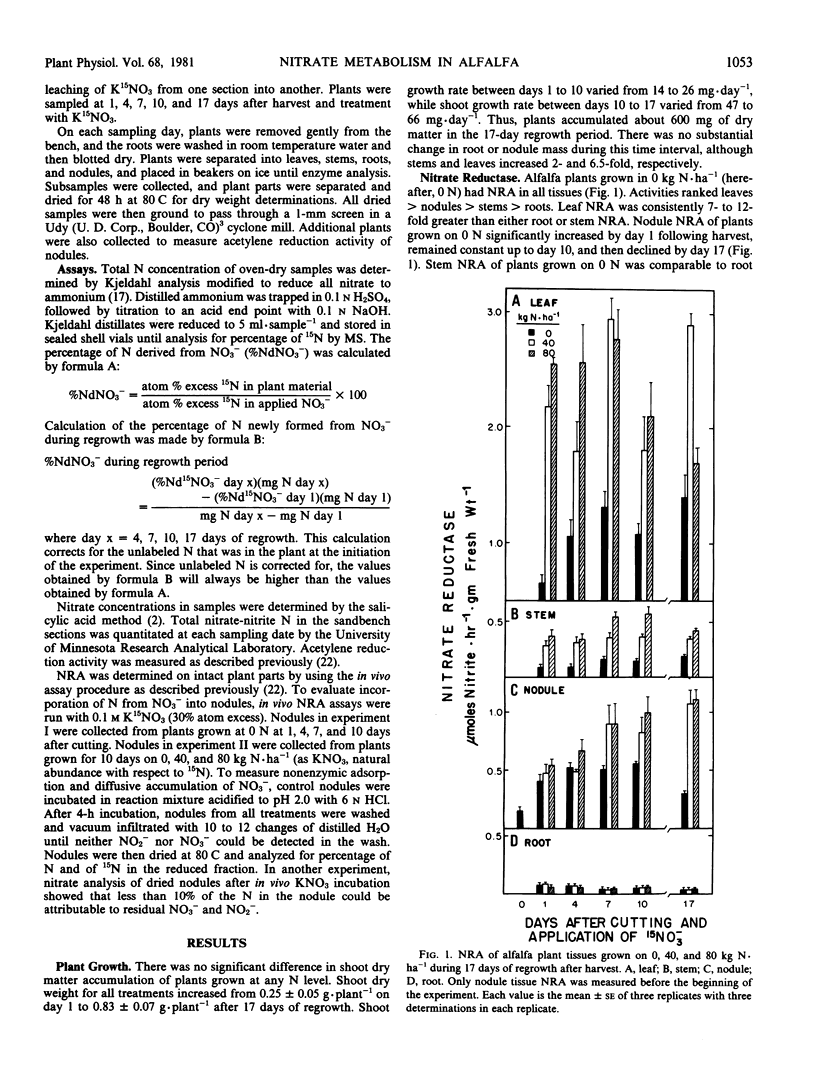
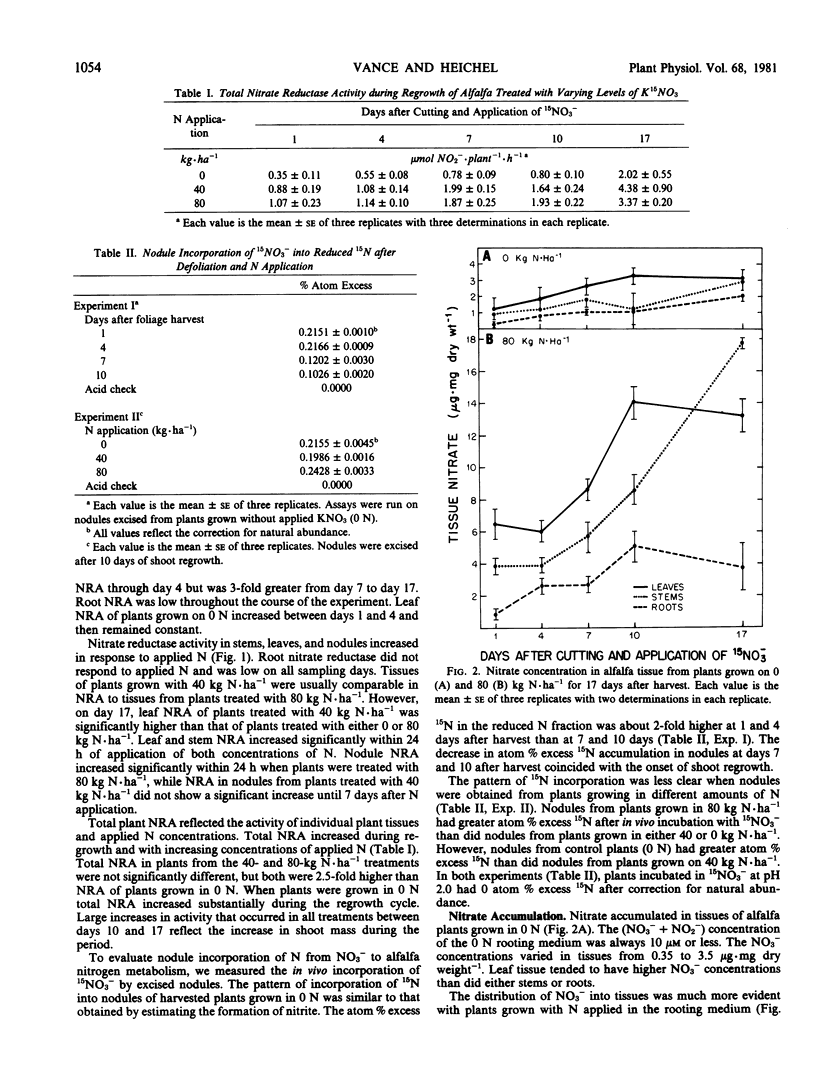
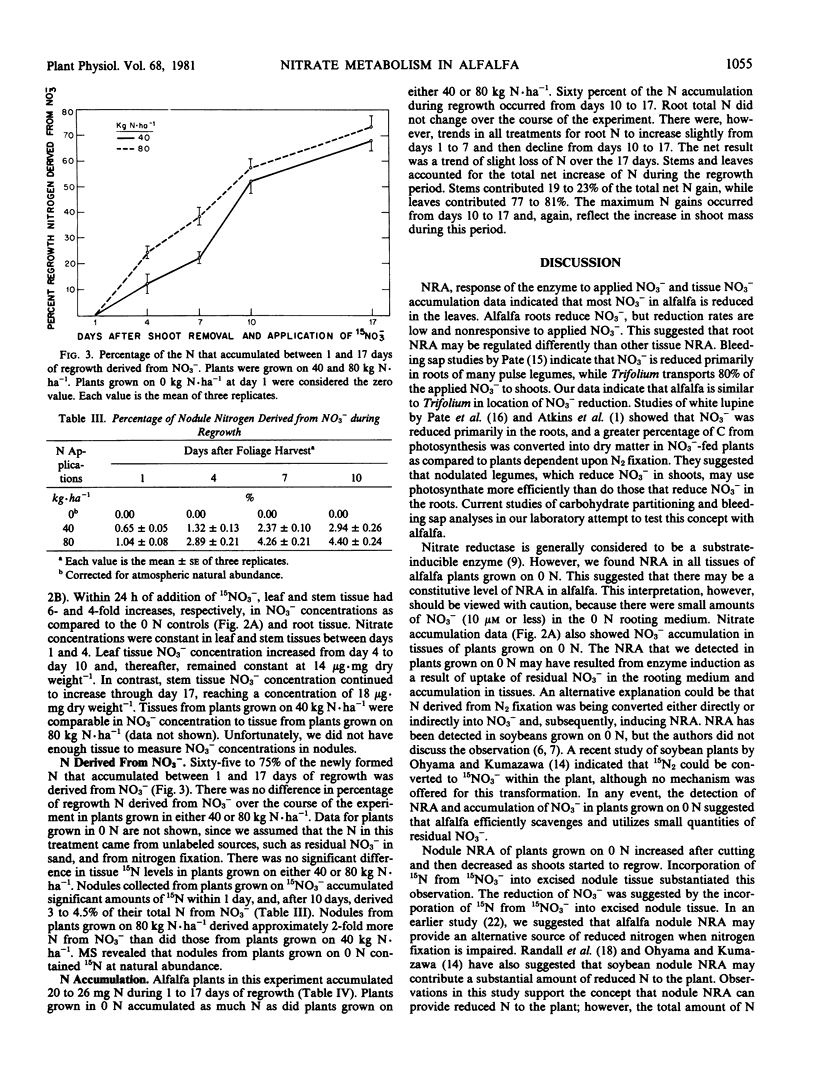
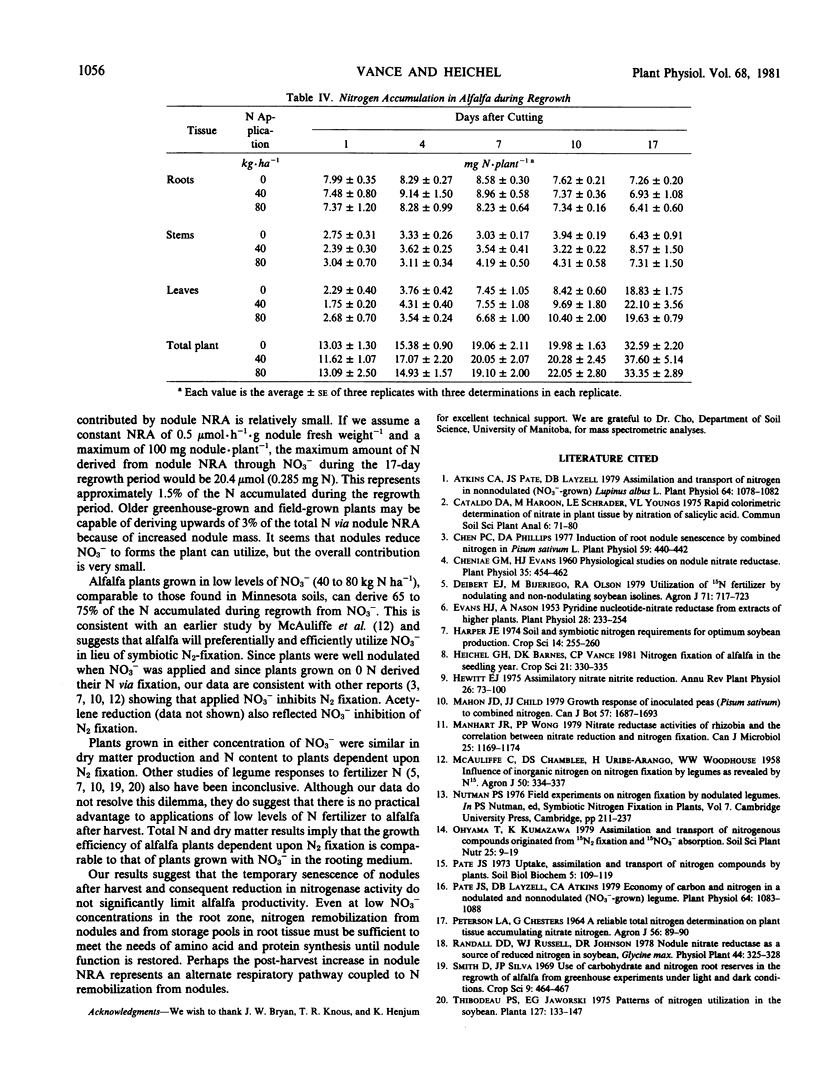

Selected References
These references are in PubMed. This may not be the complete list of references from this article.
- Atkins C. A., Pate J. S., Layzell D. B. Assimilation and Transport of Nitrogen in Nonnodulated (NO(3)-grown) Lupinus albus L. Plant Physiol. 1979 Dec;64(6):1078–1082. doi: 10.1104/pp.64.6.1078. [DOI] [PMC free article] [PubMed] [Google Scholar]
- Chen P. C., Phillips D. A. Induction of Root Nodule Senescence by Combined Nitrogen in Pisum sativum L. Plant Physiol. 1977 Mar;59(3):440–442. doi: 10.1104/pp.59.3.440. [DOI] [PMC free article] [PubMed] [Google Scholar]
- Cheniae G., Evans H. J. Physiological Studies on Nodule-Nitrate Reductase. Plant Physiol. 1960 Jul;35(4):454–462. doi: 10.1104/pp.35.4.454. [DOI] [PMC free article] [PubMed] [Google Scholar]
- Evans H. J., Nason A. Pyridine Nucleotide-Nitrate Reductase from Extracts of Higher Plants. Plant Physiol. 1953 Apr;28(2):233–254. doi: 10.1104/pp.28.2.233. [DOI] [PMC free article] [PubMed] [Google Scholar]
- Manhart J. R., Wong P. P. Nitrate reductase activities of rhizobia and the correlation between nitrate reduction and nitrogen fixation. Can J Microbiol. 1979 Oct;25(10):1169–1174. doi: 10.1139/m79-181. [DOI] [PubMed] [Google Scholar]
- Pate J. S., Layzell D. B., Atkins C. A. Economy of Carbon and Nitrogen in a Nodulated and Nonnodulated (NO(3)-grown) Legume. Plant Physiol. 1979 Dec;64(6):1083–1088. doi: 10.1104/pp.64.6.1083. [DOI] [PMC free article] [PubMed] [Google Scholar]


